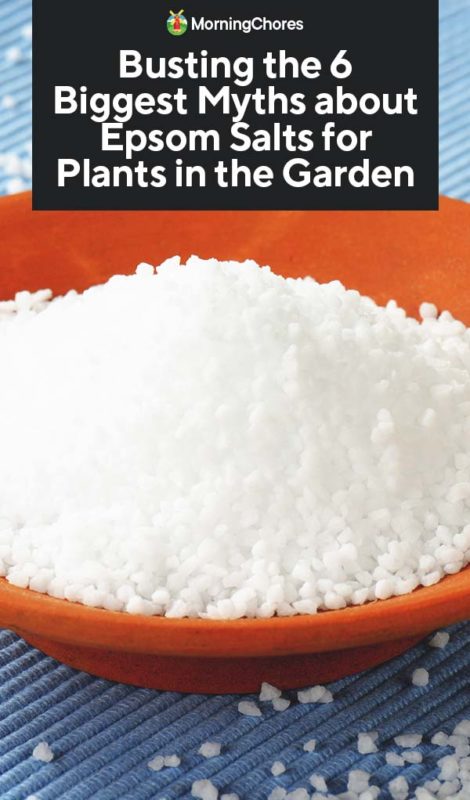Gardening Tips: What Plants Don't Like Epsom Salt and The Key Reasons Why
Gardening Tips: What Plants Don't Like Epsom Salt and The Key Reasons Why
Blog Article
Explore Why Some Plants Turn Down Epsom Salt as a Nutrient Source
In the intricate world of plant nutrition, the rejection of Epsom salt as a feasible nutrient resource by some plants poses an intriguing problem. The factors behind this selective behavior delve into a complex interplay of plant absorption systems, the distinct chemical framework of Epsom salt, and plant-specific nutrient preferences.
Plant Absorption Systems
In delving into the elaborate world of plant absorption devices, it comes to be evident that the procedure is controlled by a sophisticated interplay of physical dynamics and molecular pathways. Plants take in nutrients largely via their roots, using different transport systems to uptake important aspects such as nitrogen, phosphorus, magnesium, and potassium. Magnesium, an essential part in chlorophyll synthesis and enzyme activation, plays a crucial duty in plant development and growth.
The absorption of magnesium entails several steps, starting with its availability in the soil service. When dissolved, magnesium ions are used up by plant roots through certain transportation proteins installed in the cell membranes. These proteins promote the movement of magnesium across the root cell wall surfaces and right into the plant's vascular system, where it is then distributed to various cells to support various physiological functions.
Recognizing the complex systems behind magnesium absorption in plants clarifies how this important nutrient contributes to overall plant wellness and efficiency. By maximizing magnesium uptake pathways, farmers can enhance plant yields and high quality, highlighting the significance of understanding plant absorption characteristics for lasting agriculture techniques.
Epsom Salt Chemical Structure
The chemical structure of Epsom salt, additionally known as magnesium sulfate heptahydrate, reveals a distinctive setup of elements that contribute to its unique residential properties and applications. The seven water molecules are freely adhered to the magnesium sulfate compound, allowing it to dissolve conveniently in water and be conveniently taken up by plants via their roots.
The crystal structure of Epsom salt creates monoclinic prisms, which are extended crystals with identical ends. This crystal shape affects the physical buildings of Epsom salt, such as its texture and solubility. Comprehending the chemical framework of Epsom salt is vital for understanding its actions as a nutrient resource and its interactions with plants in gardening and farming practices.
Plant-Specific Nutrient Preferences
Plants display distinctive preferences for certain nutrients, highlighting the value of recognizing their individual needs for optimal growth and advancement. These preferences are determined by numerous aspects, including the plant species, phase of growth, environmental conditions, and dirt composition. As an example, some plants may thrive in nitrogen-rich dirts, while others need more phosphorus or potassium for healthy and balanced development. Recognizing these plant-specific nutrient choices is essential for making the most of crop yields, boosting decorative plant growth, and advertising total plant health - what plants don't like epsom salt.

Plant-specific Discover More nutrient preferences can also differ based on whether the plant is a monocot or dicot. By tailoring nutrient supplementation to satisfy the specific requirements of each plant species, cultivators can maximize plant development, reduce nutrition waste, and assistance sustainable agricultural methods.

Soil Ph and Nutrient Uptake
Soil pH plays an important role in establishing the schedule of crucial nutrients for plant uptake. Acidic soils with a reduced pH are beneficial for plants like blueberries and azaleas, while alkaline dirts with a greater pH match plants such as lavenders and clematis.
On the various other hand, alkaline dirts may restrict the schedule of nutrients like zinc, iron, and copper, affecting plant development. Keeping the suitable pH degree in the soil is crucial for ensuring that plants can effectively uptake the necessary nutrients for their healthy and balanced growth and productivity.
Hereditary Consider Nutrient Uptake
In the world of plant nutrition, the interaction of genetic factors dramatically influences the uptake of essential nutrients crucial for plant growth and advancement. Hereditary elements play a crucial role fit a plant's ability to take in and make use of nutrients properly. Variations in genes can influence the expression of transport healthy proteins responsible click to find out more for moving nutrients throughout cell membranes. These transport healthy proteins, such as networks and service providers, are inscribed by details genes that can vary among plant types and even within the very same varieties.
Additionally, hereditary elements likewise establish the efficiency of nutrient uptake devices within plants. Some plants might possess genetic qualities that improve their capability to feed on nutrients from the soil effectively, providing them a competitive advantage in nutrient-poor environments. On the other hand, genetic variants can also cause restrictions in nutrient uptake, making sure plants a lot more at risk to deficiencies even when nutrients are abundant in the soil.
Comprehending exactly how genetic aspects affect nutrient uptake is important for creating methods to enhance plant nutrition and boost crop performance in different agricultural settings. By unraveling the hereditary mechanisms associated with nutrient uptake, researchers can work in the direction of establishing genetically boosted plant ranges with improved vitamins and mineral purchase abilities.
Verdict

In the detailed world of plant nourishment, the denial of Epsom salt as a practical nutrient resource by some plants positions a fascinating dilemma. what plants don't like epsom salt. Comprehending these plant-specific nutrient preferences is critical for making best use of crop returns, enhancing ornamental plant growth, and advertising overall plant health
By customizing nutrient supplementation to meet the specific requirements of each plant types, growers can maximize plant growth, minimize vitamins and mineral waste, and assistance sustainable farming practices.
In the world of plant nutrition, the interaction of genetic elements significantly affects the uptake of essential nutrients essential for plant development and advancement. Recognizing these complexities in plant nutrient uptake is essential for maximizing plant growth and health in agricultural methods.
Report this page